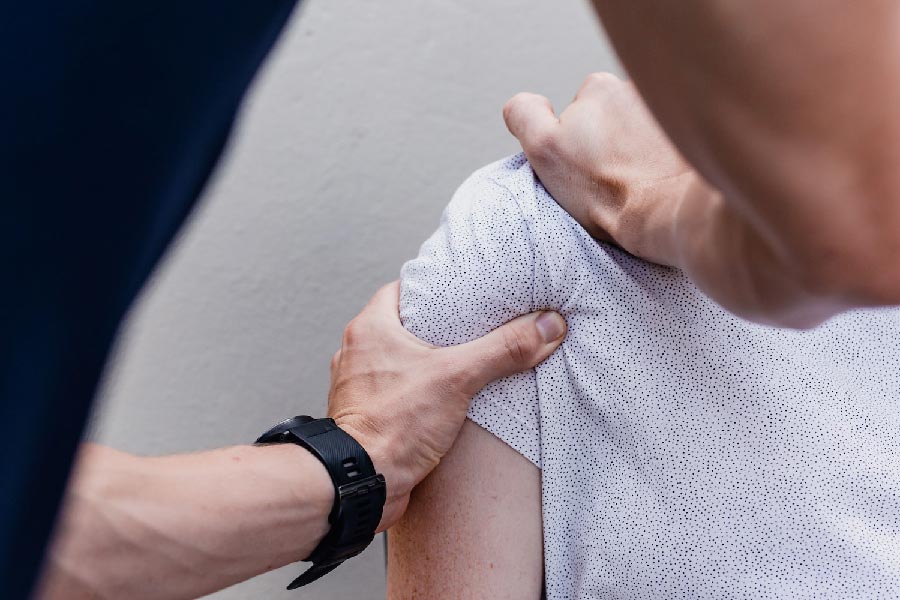Types of Physiotherapy: What You Should Know [2023]
Physiotherapy is a broad treatment discipline, with many subsets and techniques used to treat the multitude of conditions that people can present with. There are many types of physiotherapy and many types of physiotherapy treatments, all with specific applications and benefits. Below is a list of the most common types of treatments that physiotherapists provide, and the different specialties within physiotherapy.
The Different Types of Physiotherapy
Clinical Physiotherapy
The most common form of physiotherapy would be those that provide manual therapy to resolve sports injuries and everyday aches and pains. These physiotherapists can be found in a clinical setting or working directly with a sports team. These physiotherapists use a variety of treatment modalities to decrease pain, increase range of motion, and rehabilitate people from injuries. Treatments can include soft tissue therapies such as Active Release Techniques, Graston, and fascial work modalities such as laser, shockwave, IFC and ultrasound, taping, cupping, needling, and instruction in rehabilitation exercises. These treatments can help with headaches, back pain, tennis elbow, rotator cuff strains, shin splints, Achilles tendonitis, piriformis syndrome, plantar fasciitis, and many other conditions.
Hospital Based Rehab
Some physiotherapists work in a hospital setting, helping with patient recovery from surgeries and other medical interventions. Physiotherapists can help with recovery following a heart surgery, transplants, and other major surgeries. They can also help with restoring lung function, and mobility following knee, hip and other replacement surgeries. These physiotherapists often work exclusively with rehabilitation and focus on restoring muscular strength and function.
School or Social Work Based Physiotherapy
These physiotherapists assess children or adults who may have some form of delayed physical development, and work to improve strength and function in those individuals. This is especially important with children, to ensure that they are meeting motor milestones, and giving parents the resources to assist with their physical development. These physiotherapists are often employed by the province or a school board.
The Different Types of Clinical Physiotherapy
Within clinical physiotherapy, there are numerous subsets of treatment types, both for very specific conditions, and for general use for musculoskeletal complaints. Here is a short and by no means comprehensive list of just some of the different types of clinical physiotherapy.

Pelvic Floor Physiotherapy
Pelvic floor physiotherapy, or pelvic health physiotherapy, is a form of treatment that focuses on issues arising from dysfunction of the pelvic floor. Issues with the pelvic floor can lead to bladder leakage, painful sex, incomplete bladder emptying, and pelvic pain. Pelvic floor physiotherapists use both internal and external hands-on treatment techniques to re-train the pelvic floor, relieve tension, or restore muscular function. A pelvic floor physiotherapist takes extensive courses to learn how to perform these treatments safely and effectively.
Vestibular Physiotherapy
Vestibular physiotherapists can determine what is causing a patient’s dizziness, lightheadedness, or vertigo. Often, high-tech equipment like infrared goggles are used, which can be used to detect rapid eye movements called nystagmus, which can point to the cause of a patient’s feelings of dizziness or imbalance. BPPV, or Benign Positional Paroxysmal Vertigo, is a common cause of vertigo or dizziness and can be detected using these glasses. Based on this testing and other tests, a vestibular physiotherapist can determine the cause of the dizziness, and thus provide the best form of treatment and rehabilitation exercises to get rid of the symptoms.
Concussion Physiotherapy
Concussions can be very difficult to treat and are often caused by trauma. Physiotherapists who specialize in concussion management know the most current research on concussions, which has changed a great deal over the past few years. The physiotherapist can prescribe exercises to get the patient back to doing what they love without the headaches, dizziness, light sensitivity, and other symptoms that are often associated with concussions.
Different Types of Hands-on Treatment from Physiotherapists
For soft tissue injuries, there are numerous options available to physiotherapists providing treatment. Some of these are hands-on, some are machine-based, and others involve rehab. Physiotherapists will use the best combination of therapies to get patients better as quickly and as fully as possible.

Active Release Therapy
Active Release is a form of soft tissue work that helps reduce adhesions and scar tissue in injured muscles. The muscle is worked on while the patient goes through a series of movements, which restores proper blood flow deep within the muscle, and facilitates healing. This can be used on most soft tissue conditions, and patients often feel immediate relief.
Graston Technique
Graston is a form of soft tissue therapy that uses stainless steel tools. The tools are moved across the surface of a tight or tender muscle to reduce adhesions. Graston is especially useful for fascial tension, and broad muscular tension in larger muscles such as hamstrings or the low back. It is often used in conjunction with Active Release.
Deep Tissue Laser
Our physiotherapists at Encompass Sports Therapy use class 4 lasers, which are significantly stronger than other therapeutic lasers. Deep tissue lasers can bring blood flow deep into the damaged tissues and speed up cellular healing. This technology can be used on everything from ankle sprains to headaches, and patients often get immediate pain relief after just one session. This is because the laser also significantly reduces inflammation.
Shockwave Therapy
Shockwave therapy is another unique treatment option, which is used by both physiotherapists and chiropractors at Encompass Sports Therapy. It is highly effective for several chronic conditions, including plantar fasciitis, achilles tendonosis, tennis elbow, golfer’s elbow, and rotator cuff injuries. Shockwave therapy sends soundwaves through the tissue, breaking up adhesions, and triggering the body’s acute healing response, which speeds up healing for difficult, chronic conditions.
Acupuncture/IMS
Many physiotherapists use needles to help get their patients better. Needling can improve blood flow in muscles, and get tight areas to release. It is often used in conjunction with some of the hands-on soft tissue therapies listed above.
Rehabilitation Exercises
Physiotherapy is not only concerned with getting patients out of pain, but also with teaching them how to prevent the injury from returning. This means strengthening weaker or imbalanced muscles and tissues while stretching areas that have been overused or strained. Rehab exercises can involve things a patient can do in their own home or more complicated exercises that require gym equipment. Rehab knowledge is a key part of a physiotherapist’s tool kit, as it keeps patients from being as vulnerable to injury.
Conclusion
These are just some of the different types of physiotherapy, and the different modalities that physiotherapists use in their practice. Physiotherapy is a broad discipline, but their primary goal across all settings is getting patients better, and back to the quality of life that they had before their injury or surgery. If you have any questions about physiotherapy treatment, or how it might be able to help you, give our clinic a call and our team would be happy to answer any questions that you might have.
Written by:
Dr. Mike Belding
Chiropractor, B.Sc, ART

